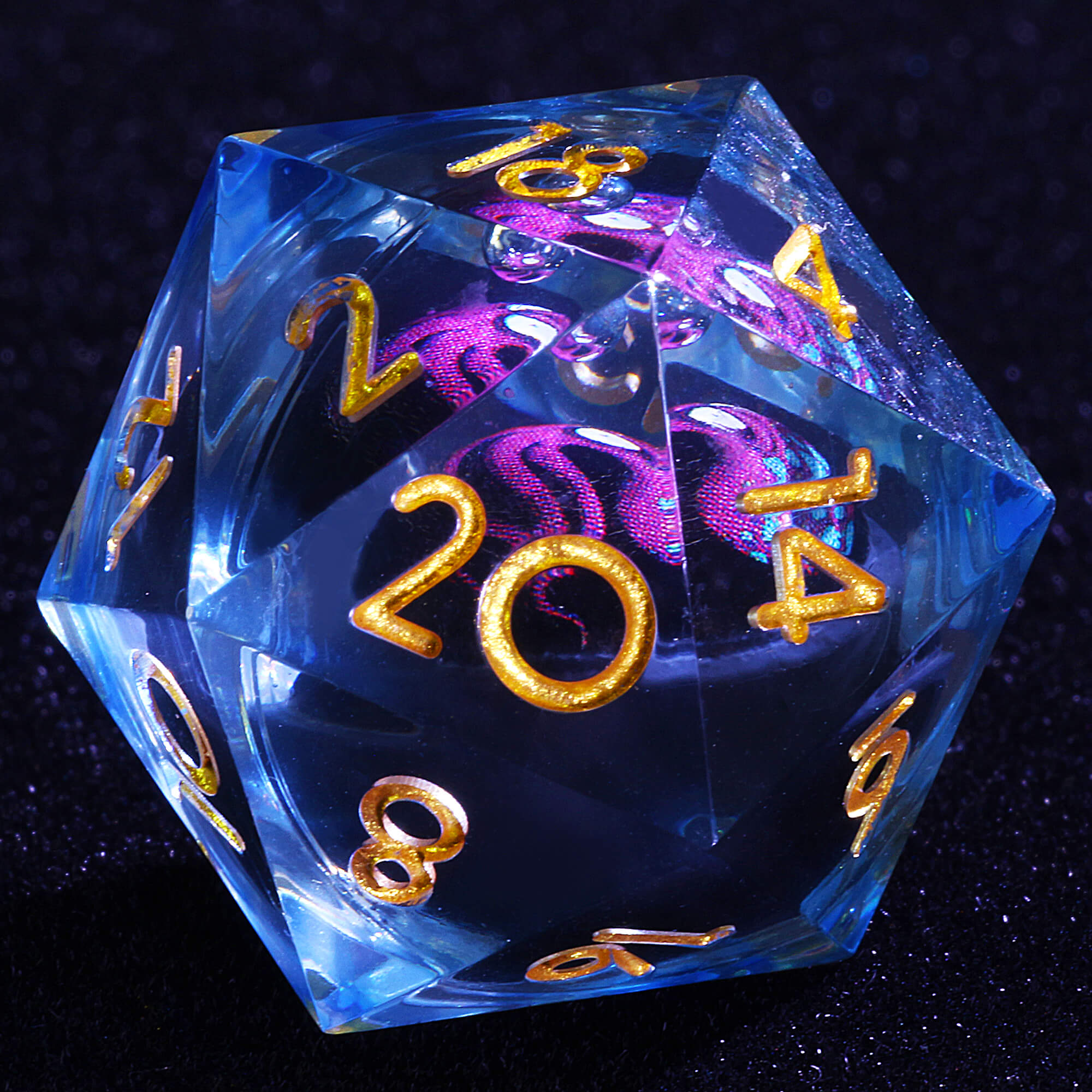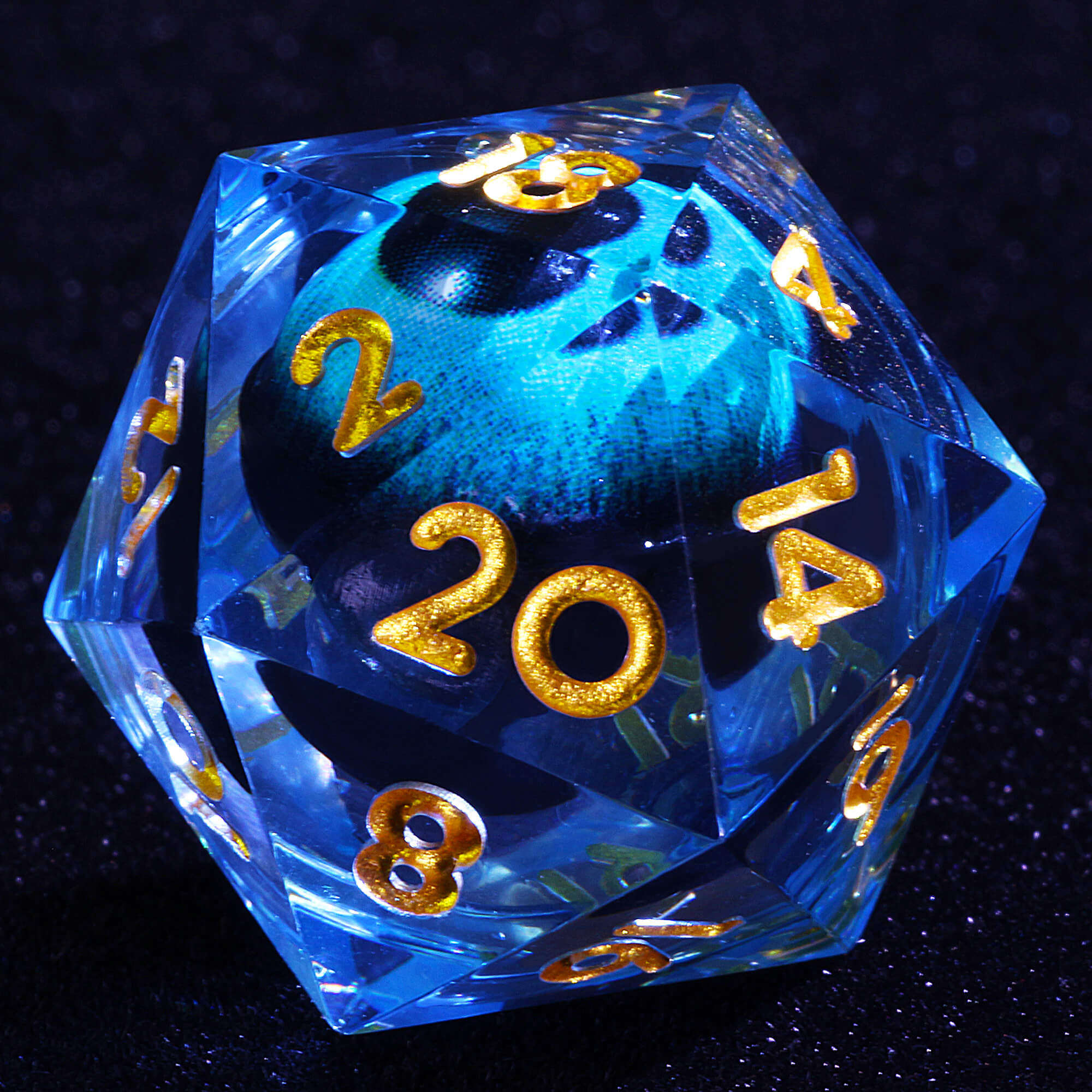In Dungeons & Dragons (D&D), a standard dice set includes seven dice: D4, D6, D8, D10, D12, D20, and a percentile D10. Each die serves a unique role in gameplay, from calculating damage to resolving actions. This guide will explain each die's function to enhance understanding and gameplay.
D4 Dice (Four-Sided Die)
Description
The D4 is a pyramid-shaped die with four triangular faces. Its compact design makes it easy to handle, and it's often used for precise, low-damage calculations.
Usage in Gameplay
- Damage Rolls: The D4 is frequently used for spells and weapons with lower damage, such as a dagger or certain magical effects.
- Random Events: It can also represent small random outcomes, like rolling for minor effects or decisions.
- Reading the D4: We have a dedicated article on how to read D4.
D6 Dice (Six-Sided Die)
Description
The D6 is a standard cube with six faces, and it's the most familiar die shape for many players. It's versatile and appears in many board games as well.
Usage in Gameplay
- Damage Rolls: Commonly used for various weapons and spells, from simple attacks to moderate effects.
- Ability Checks: The D6 can be used for multiple skill checks and random results, providing a straightforward way to resolve actions.
D8 Dice (Eight-Sided Die)
Description
The D8 is shaped like a diamond and features eight faces. Its slightly more complex shape makes it ideal for various damage rolls and random results.
Usage in Gameplay
- Damage Rolls: Often employed for weapons and spells that deal moderate damage, such as a longsword or certain fire spells.
- Random Results: Useful for generating random outcomes within a broader range than the D6.
D10 Dice (Ten-Sided Die)
Description
The D10, shaped like a decahedron, has ten faces and is used for various calculations. It can also work in tandem with another D10 for percentage rolls.
Usage in Gameplay
- Damage Rolls: Typically used alongside other dice to determine damage, especially for weapons and spells with variable effects.
- Percentile Rolls: When rolling for percentages (d100), two D10s are used together—one for the tens and one for the unit digit.
- Reading the D100: We have a dedicated article on how to read D100.
D12 Dice (Twelve-Sided Die)
Description
With twelve faces, the D12 is less common but still essential for specific gameplay mechanics. Its shape allows for a wide range of outcomes.
Usage in Gameplay
- Damage Rolls: Used for high-damage weapons or spells, such as a great axe or certain high-level magic.
- Random Events: Ideal for scenarios requiring a larger range of outcomes, adding variety to the gameplay.
D20 Dice (Twenty-Sided Die)
Description
The D20 is an icosahedron with twenty faces central to D&D gameplay. It's the most critical die, influencing most actions and decisions.
Usage in Gameplay
- Attack Rolls: Determines the success or failure of attacks against opponents, including monsters and NPCs.
- Skill Checks: Used to roll against skill Difficulty Classes (DCs) to resolve various tasks and challenges.
- Saving Throws: Determines whether characters avoid or reduce damage and other adverse effects from spells or traps.
Conclusion
In Dungeons & Dragons, each die in a standard set serves a unique purpose that enriches the gameplay experience. The D4 is used for smaller damage rolls and specific spells, while the versatile D6 handles a wide range of damage rolls, ability checks, and random outcomes. The D8 introduces variability for moderate damage and random events, and the D10 is crucial for rolling percentiles and specific damage calculations. The less common D12 is reserved for high-damage scenarios and broader random outcomes. At the same time, the central D20 is pivotal for attack rolls, skill checks, and saving throws, determining the success of many actions.






































